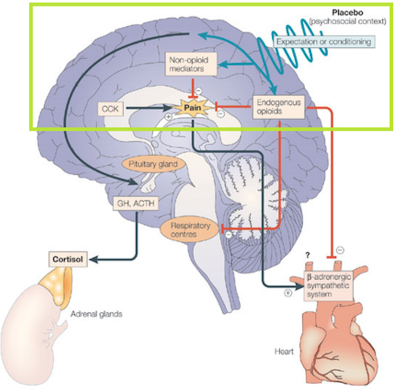 )
)Anyway, here is what Adriaan and Emilio have to say (references removed for brevity, for now):
Quote:
| There is evidence that therapists struggle when treating patients with chronic pain... Although it is likely that many factors are involved, it is believed that a significant contribution to this clinical struggle is the lack of training and preparedness for treating chronic pain.. Not only are therapists under-prepared to treat this challenging population, but the pain models they follow are outdated and the treatment options that flow out of these models are often ineffective, leading to additional frustration. Therapy, especially orthopedic therapy, is traditionally rooted in a biomedical model that focuses on tissues and tissue injury. This traditional biomedical model of therapy suggests that every disease process (dysfunction) can be explained in terms of an underlying deviation from normal function, such as a pathogen or injury. The model implies that pathology and symptoms are correlated such that a greater expression of symptoms in patients would indicate greater underlying pathology. The model proposes that correction of the underlying pathology with treatment (for example, injection, surgery, manipulation, or exercise) should result in elimination of the symptoms and subsequent restoration of normal function in the patient. Clinical experience and pain science research tells us otherwise. Many patients will demonstrate physical and diagnostic signs that they have recovered from injury, yet they will continue to report symptoms/pain. Conversely, it has been well documented that many healthy asymptomatic people and patients often have significant tissue pathology (arthritis of the spine, bulging discs, bone spurs, etc.) yet experience little to no pain. The time has come for therapists to take on the more comprehensive biopsychosocial model (which) encompasses more than just the biological factors (anatomy, physiology, pathoanatomy) in human functioning by addressing the psychological (thoughts, emotions, behaviors) and social (work, culture, religion) factors, which are known to play a significant role in patients experiencing pain A true biopsychosocial model includes a greater understanding of how the nervous system processes injury, disease, threat and emotions. |



Thank you, Adriaan and Emilio, for your refreshing bluntness.


I will quote these 2 little paragraphs every time I bump into anyone in my own country who jumps down my throat at the mere suggestion that orthopaedic manual therapy isn't the highest and most deserving of reverence kind of PT available on the face of the planet.
(Oh yeah... it has happened. It wasn't pleasant.)
I like this excerpt from pages two and three so much that I think I might blog on it for awhile, dig up the references, even..
Just these two paragraphs.
1. Louw A, Puentedura E; Therapeutic Neuroscience Education. Orthopedic Physical Therapy Products; 1 edition (August 19, 2013)


